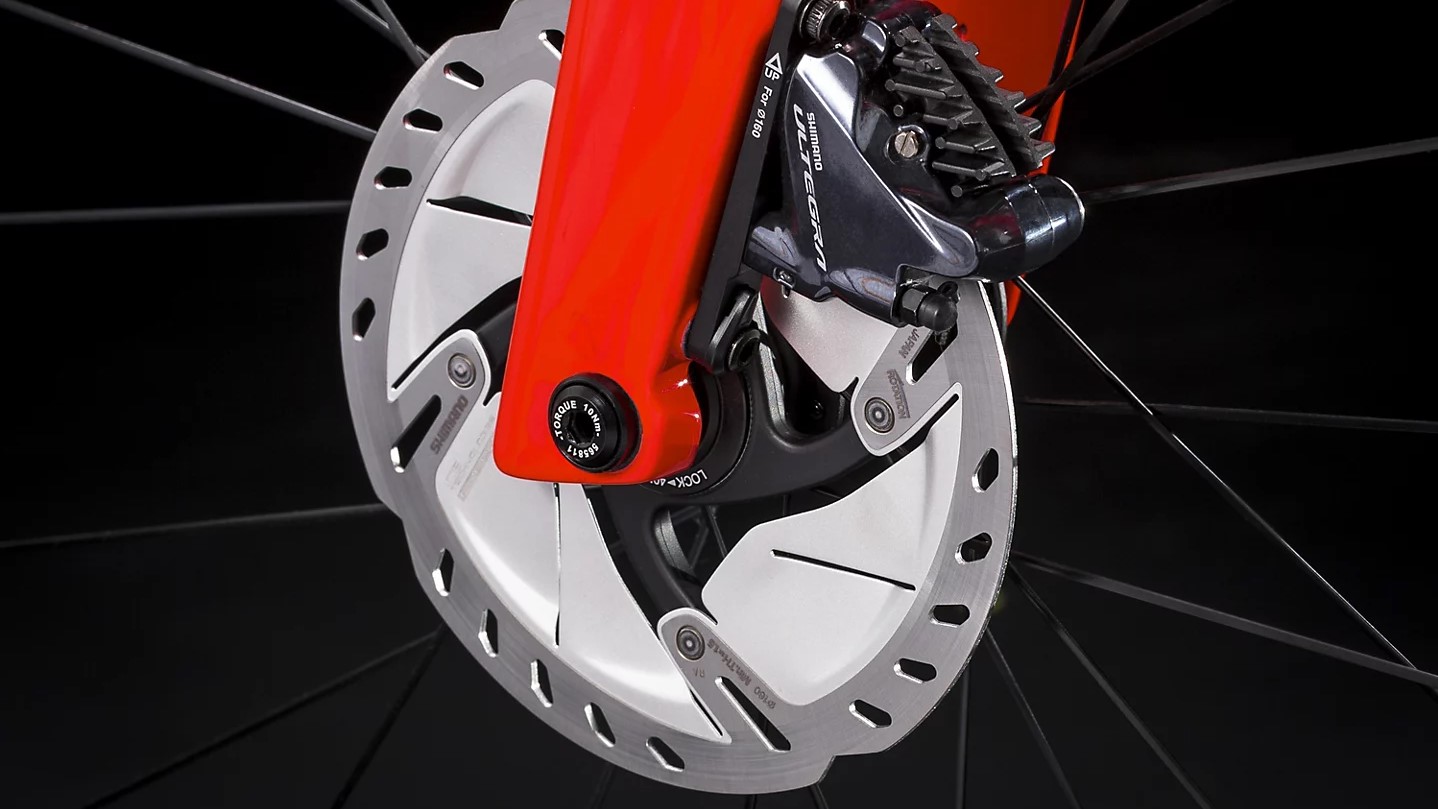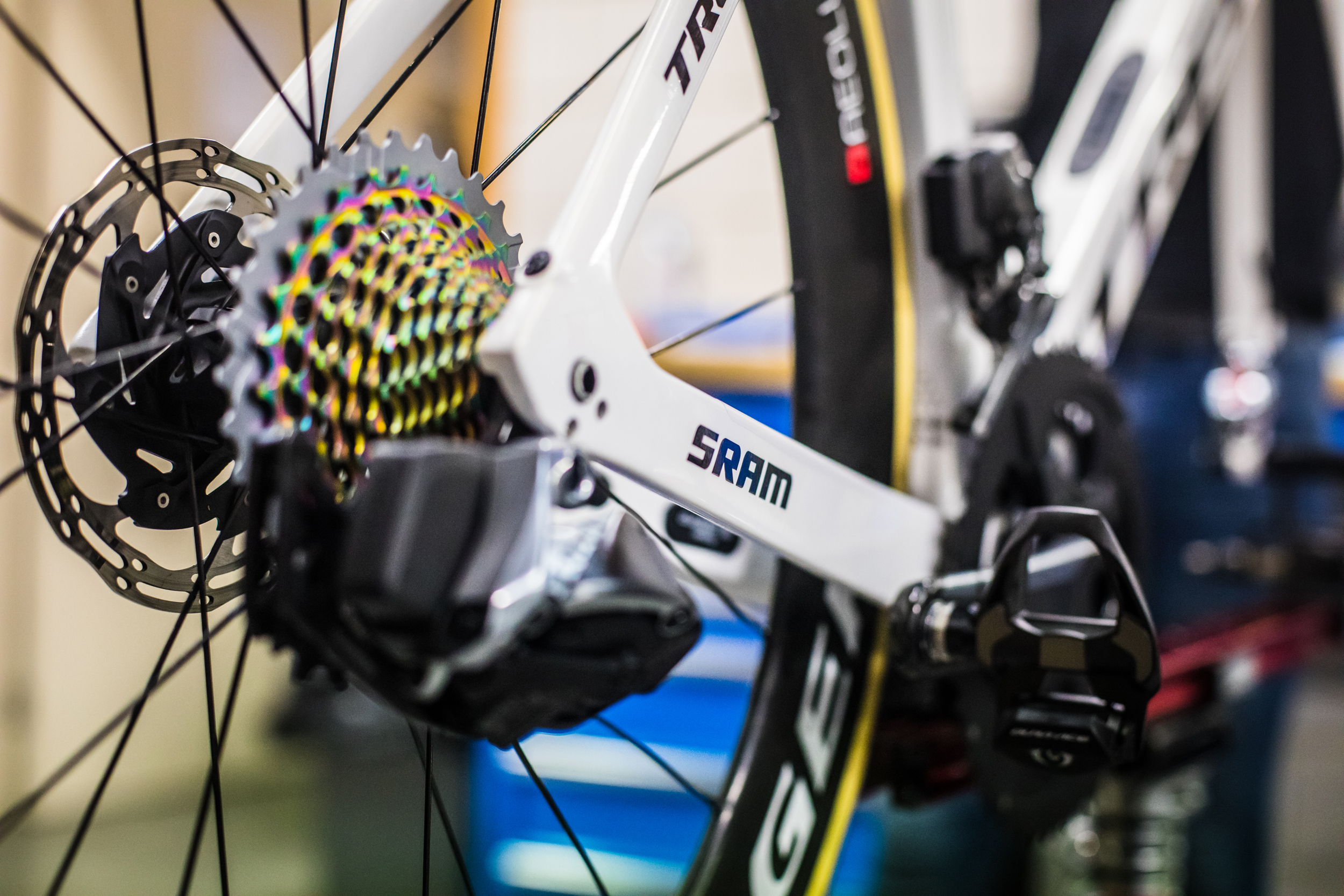The benefits of disc brakes on your road bike
Disc brakes remain a source of debate in road cycling but the advantages are numerous

One of the hot topics for debate over the past few years has been road bike disc brakes. It was inevitable that the benefits of hydraulic discs brakes would eventually transition to road bikes. An ability to stop with predictable performance, and enough power, in wet conditions, clearly justify discs brakes as a safety gain.
The notion of discs as a potential cutting edge risk during bunch crashes has proven disingenuous, despite initial concerns by pro riders and teams. Disc brakes are powerful and beneficial but which specification is best for road bikes?
Cycling disc brakes have been engineered primarily for the mountain biking application, with lower speeds but higher spikes of actuation (lever pressure). Mountain bikers also have different modulation requirements, as the terrain they ride on (gravel) has no friction to assist with deceleration.
For mountain bikers, wheel lock-up is a function of braking and steering in steep and loose terrain. That does not transfer well to the road.
Road bikes have the benefit of a high fiction riding surface (Tarmac), which provides a more consistent braking interface.
- Erik Zabel: Disc brakes can be the difference between winning and losing
- Disc brake said to be cause of serious injury at Paris-Roubaix Espoirs

Discs brakes are hugely powerful and that can be an issue in cycling. The available tyre surface is so small, that wheel lock-up is merely a few millimetres of lever pressure away. Critics of discs brakes in road cycling point to the fact that in most deceleration scenarios, you don’t need the overwhelming power of a hydraulic disc system.
Safety equipment works on the principle of redundancy. You might not use it most of the time, but that surplus braking capacity is critical when you need it in an emergency.
The latest race content, interviews, features, reviews and expert buying guides, direct to your inbox!
The question of weight is irrelevant as the mass discrepancy between a rim and hydraulic disc brake system is never more than a few hundred grams. In some cases, disc-brake bikes are even lighter than their rim-equipped counterparts - look at the 6.7kg Factor O2 VAM Dura-Ace Disc for instance. And what price, even in grams, can you possibly ascribe to a cycling safety feature, which works with greater consistency and function, in all conditions?
Disc brakes love heat - and long downhills
The most fraught braking environment for any road cyclist is a long Alpine descent. Gravity and high wheel speeds make an Alpine descent the place where disc brakes come into their own.
Heat is a necessary requirement to make disc brakes work, with the fiction interplay between a steel disc rotor and brake pad. Once they are happily operating at high temperature, disc-brake performance is wonderfully consistent and secure.
Pad composition is an important aspect of how disc brakes generate, maintain and manage their required heat and performance profile.
Resin (organic) pads are the industry default, but what works best at higher temperature, are sintered (metallic) pads, which contain more metal elements. Best of all, you have the option to swap out pads, for different rides, prioritising durability, modulation or outright stopping-power.
Swapping out resin pads for a set sintered stoppers could be the difference between a terrifying and terrific experience, on super-technical Alpine descents.
Having the option of changing your braking dynamics, by using a different pad material, is one of the many advantages of a disc-brake system.
Imagine you are about to embark on a trip to France for that Alpine riding tour. Pop a few different sets of brake pads in your riding bag, and you are covered for any eventuality in terms of gradient and weather.
There is no worse feeling than degrading brake modulation and function, as the frequency of Alpine hairpins increases during your descent. With disc brakes running the appropriate pads, this is not an issue. And you can ride with much greater confidence.
It is not only in extreme descending gradients where disc brakes prove their worth.
In general riding, they can assist in preventing hand fatigue. With the surplus power of a disc-brake system, you’ll soon develop the confidence of only having to feather a brake lever for sufficient deceleration, which is much less fatiguing on your hands, on a long ride.
The same logic applies to traffic scenarios, where you are braking frequently. A traditional rim-brake-equipped bike requires much greater – and sustained – lever pressure, to yield similar stopping force. It is therefore potentially more fatiguing to ride than a disc-brake system.
Lance Branquinho is a Namibian born media professional, with 15-years of experience in technology and engineering journalism covering anything with wheels. Being from Namibia, he knows a good gravel road when he sees one, and he has raced some of Africa’s best-known mountain bike stage races, such as Wines2Wales and Berg&Bush.
